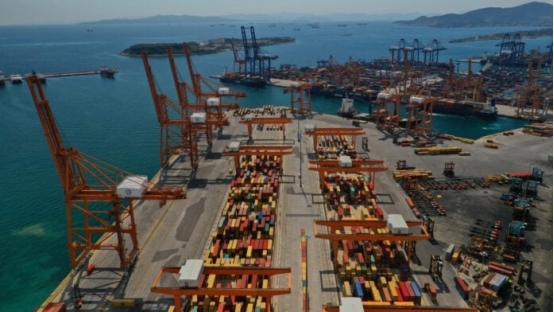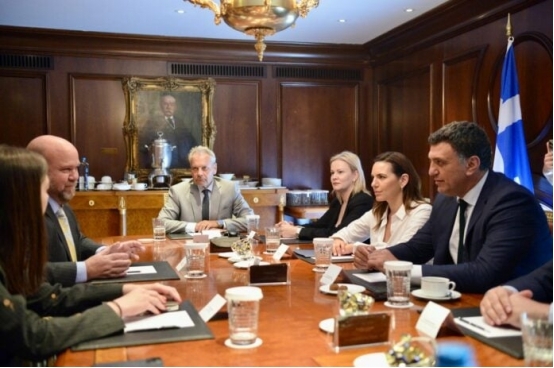By Paris Tsirigotis

An upward trend has been recorded in container traffic at the Port of Piraeus, despite ongoing geopolitical tensions that affect global trade flows.
The full return of container ships through the Red Sea remains uncertain, following the outbreak of the Israel-Iran conflict.
However, the Port of Piraeus — and in particular Piers II and III operated by Cosco Shipping Ports — is recording an increase in container traffic, reflecting the port’s resilience and strategic importance under the new conditions.
According to data from Cosco Shipping Ports, container traffic through Piers II and III at the Piraeus Container Terminal increased by 5.6% on a monthly basis.
Specifically, in May 2025, a total of 337,000 TEUs were handled, compared to 319,000 TEUs in the same month of 2024.
Over the five-month period, traffic rose by 5.2%. More precisely, 1.674 million TEUs were handled through Piers II and III, compared to 1.591 million TEUs during the same period last year.
At a global level, Cosco Shipping Ports delivered strong performance in May 2025, with container traffic across its 35 ports reaching 9.8 million TEUs, marking a 3.6% increase compared to the same month in 2024.
In January – May 2025, a total of 46.6 million TEUs were handled at Cosco-operated terminals, up from 43.9 million TEUs during the same period in 2024 — an increase of 6.2%.
The importance of cruising

Vassilis Kikilias, Minister of Maritime Affairs and Insular Policy, and Olga Kefalogianni, Minister of Tourism, had a joint meeting with Bud Darr, Executive Chairman and CEO of the Cruise Lines International Association (CLIA), in order to discuss the key issues concerning the cruise activity in Greece.
Kikilias underlined the importance of cruising as a development pillar for island Greece, within the framework of a sustainable tourism model. Regarding the cruise fees, he stressed that the implementation of the measure is a central government choice and is linked to the plan to support and upgrade critical port infrastructure on the islands.
As he stated, the goal is to provide safe and functional facilities, improve accessibility for visitors and ensure integrated management of natural resources.
Kikilias highlighted the need to strengthen cooperation with representatives of the cruise industry and of course with CLIA, in order to ensure proper planning. As he noted, this can be achieved either through setting visitor limits per destination, or by extending the tourist season.
At the same time, it was agreed to create a joint working group with the participation of the ministries and CLIA, at the level of general secretaries, with the aim of institutionalizing a stable channel of cooperation and resolving issues related to cruising.
Finally, there was a shared belief that the development of cruising should be oriented towards new, alternative destinations, based on sustainability and quality.
(Editor: fubo )


